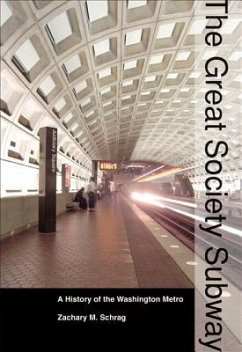Many residents and visitors rely on the Washington Metro, the rapid transit system that serves the District of Columbia and its suburbs. In the first comprehensive history of the Metro, Zachary M. Schrag tells the story of the Great Society Subway from its earliest rumblings to its emergence as the nation's second-busiest rapid transit system. Using extensive archival research as well as oral history, Schrag argues that the Metro can be understood only in the political context from which it was born: the Great Society liberalism of the Kennedy, Johnson, and Nixon administrations. He scrutinizes the project from its earliest days, including general planning, routes, station architecture, funding decisions, land-use impacts, and the behavior of subway riders. The story of the Metro sheds light on the development of metropolitan Washington, postwar urban policy, and the promises and limits of rail transit in American cities. "A fascinating look at a modern transit triumph."--Trains "The author makes us privy to the thinking that went into the system's design."--Washington Post Book World "Extensively researched, cleverly structured, and finely written, this book stands out for the way it provides an integral, comprehensive account of a key urban service."--American Historical Review "[Schrag] shows the interrelationship of citizens' hopes and fears, visionaries' ideas, politicians' need to succeed, engineers' practical requirements, and the ebb and flow of affecting events over time. It is a fascinating story well told . . . a love story by an historian for his city and its people."--Journal of the American Planning Association "This is a remarkable book. It has drama, it has pathos, it has passion, it has literary grace."--Journal of Transport History
Hinweis: Dieser Artikel kann nur an eine deutsche Lieferadresse ausgeliefert werden.
Hinweis: Dieser Artikel kann nur an eine deutsche Lieferadresse ausgeliefert werden.







